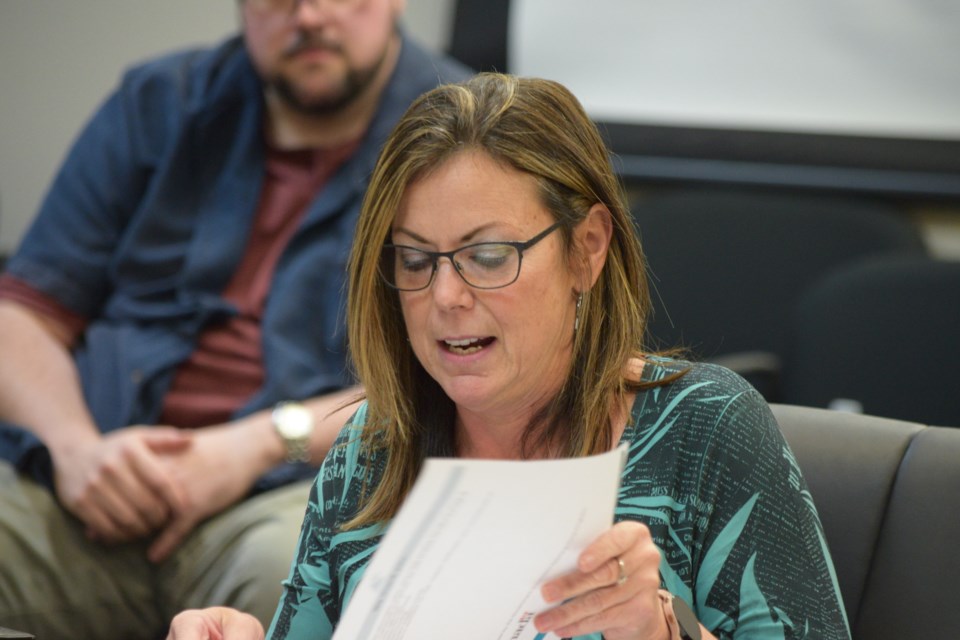BARRHEAD - It might not be as visible as in some larger communities, but Barrhead has a homelessness program.
Barrhead and District Family Community Support Services (FCSS) executive director Karen Gariepy always knew that is true, but now she has some, albeit limited numbers, to back it up.
On Nov. 14, Gariepy presented the 44-page 2023 Town and County of Barrhead 2023 Alberta Provincial Housing and Service Needs Estimation survey results to Town of Barrhead councillors.
The survey was part of a larger project by the Alberta Rural Development Network (ARDN) to determine the extent of homelessness in 21 rural communities across the province. The survey was conducted locally by FCSS, Ripple Connection Support Services (RCSS), and the Barrhead and District Social Housing Association (BDSHA).
The ARDN is a not-for-profit organization created in 2009 by partnering with the province's 21 public post-secondary institutions. Its mandate is to support rural sustainability through a wide variety of initiatives.
Gariepy gave County of Barrhead councillors a preview of some of the yet-to-be-complete survey results at their Oct. 3 meeting.
"We talk about homelessness, but it is a range of different things; it is just not the stereotypical people on the street," she said. "It is really about people who are housing insecure."
The study categorized the levels of housing insecurity into four classes: unsheltered, absolutely homeless, living on the streets or in places not intended for human habitation; people who are staying in overnight shelters due to homelessness, as well as those staying in shelters due to family violence; provisionally accommodated, those whose accommodation that is temporary or that lacks security for tenure, i.e. couch-surfing, living in transitional housing, living in abandoned buildings, living in places unfit for human habitation, people who are housed seasonally, people in domestic violence situations; people at risk of being homeless, for example, those who are one missed rent payment away from being evicted or those whose accommodations may be condemned for health, by-law, or safety violations.
The survey was anonymous. The only identification asked was for people to provide their initials to ensure no duplication.
Over the four weeks, 118 surveys were conducted, with 81 accepted for further analysis and the final survey results.
Not all FCSS, RCSS, or BDSHA clients chose to participate in the survey.
"Which is unfortunate," Gariepy said. "As a result, there is a portion of people experiencing homelessness and housing insecurity whose voices were not captured in this project," Gariepy said, adding the result is that the survey shows a very conservative picture of the homelessness issue in Barrhead.
The numbers
Based on the survey results, in Barrhead, Gariepy said at least 128 individuals are "housing insecure".
The top three reasons for housing insecurity listed in the survey were low wages, inability to afford rent or mortgage payments, and illnesses and medical conditions.
"People who suffer from housing insecurity often fluctuates," Gariepy said. "They can be on the street one day, sheltered the next."
According to Statistics Canada, 24.4 per cent of all households report spending more than 30 per cent of their income on shelter, their dwelling isn't suitable, or have significant repair needs.
It also shows the median after-tax income in the Town of Barrhead for single-income households to $35,600 and $61,600, compared to $36,000 and $74,000 in the County of Barrhead.
Statistics Canada also shows that the cost of living is five per cent higher than the national average and one per cent lower than the provincial average.
Gariepy added that the survey also shows a relatively high percentage of the housing insecure in the community are seniors.
She added that the survey also shows that a high percentage of Barrhead's housing-insecure population is college or university-educated.
Of those who reported being housing insecure, 20 per cent reported paying $500 to $999 in rent or mortgage payments, 25 per cent paid between $1,000 and $1,499, while 13 per cent paid between $1,500 and $1,999 and two per cent paid over $2,000.
Among housing-insecure respondents, 35 per cent don't have sufficient or affordable heating, and 24 per cent do not have fire protection, i.e. smoke alarms and fire extinguishers.
Gariepy said even those who identified their housing as stable reported they lacked basic amenities such as indoor plumbing, heat, electricity, and access to safe drinking water.
Transportation challenges
Another related issue the survey identified was the community's need for more transportation services.
Gariepy said many of the survey's respondents who identified that their housing was insecure also had challenges accessing essential services, with many having to travel upwards of an hour and a half one way.
"Respondents who are unable to access the necessary supports will continue to experience housing insecurity at a much higher rate," she said.
Gariepy added survey respondents also noted that many of the services they need to access and are available in the community are not readily accessible for those with mobility challenges.
What homelessness looks like in Barrhead
Gariepy said a typical scenario for a housing-insecure person in Barrhead would be a woman between 40 and 59 who has lived in the community for more than eight years and shares a rented home, from $500 to $1,000, with her partner.
"She is employed full-time, reports spending more than 30 per cent of her income on housing, and finds it difficult to pay her rent consistently," she said. "Her home also lacks affordable and sufficient heating and regularly accesses basic needs and supports."
Survey recommendations
Gariepy noted the survey identifies the need for additional and continued education on homelessness to broaden the community's understanding of homelessness and increase empathy for those who experience housing insecurity, consider mobility-challenged accessible public transportation and conduct a housing audit in the community to increase the amount of affordable and accessible housing.



